Suborbital Research
Introduction
NASA’s Science Mission Directorate (SMD) seeks to advance innovative technologies and cutting-edge scientific investigations for its wide range of current and future missions. To achieve this, SMD provides opportunities for conducting investigations involving suborbital flight testing via the Research Opportunities in Space and Earth Sciences (ROSES) solicitation to collect unique scientific data as well as demonstrate and advance research and/or technology payloads.
To complement and augment the current capabilities available via the traditional NASA-provided suborbital vehicles, SMD has incorporated a suite of commercial suborbital capabilities (Figure 1) into the ROSES (B.9) Heliophysics – Low Cost Access to Space (H-LCAS) and (D.3) Astrophysics Research and Analysis (APRA) solicitations that leverage NASA-contracted commercial suborbital providers via the STMD Flight Opportunities program. This expanded portfolio of rocket-powered vehicles and high-altitude balloons offers H-LCAS and APRA researchers additional suborbital platform options, expanded capabilities, and higher flight cadence to enable innovative suborbital investigations and technology testing.
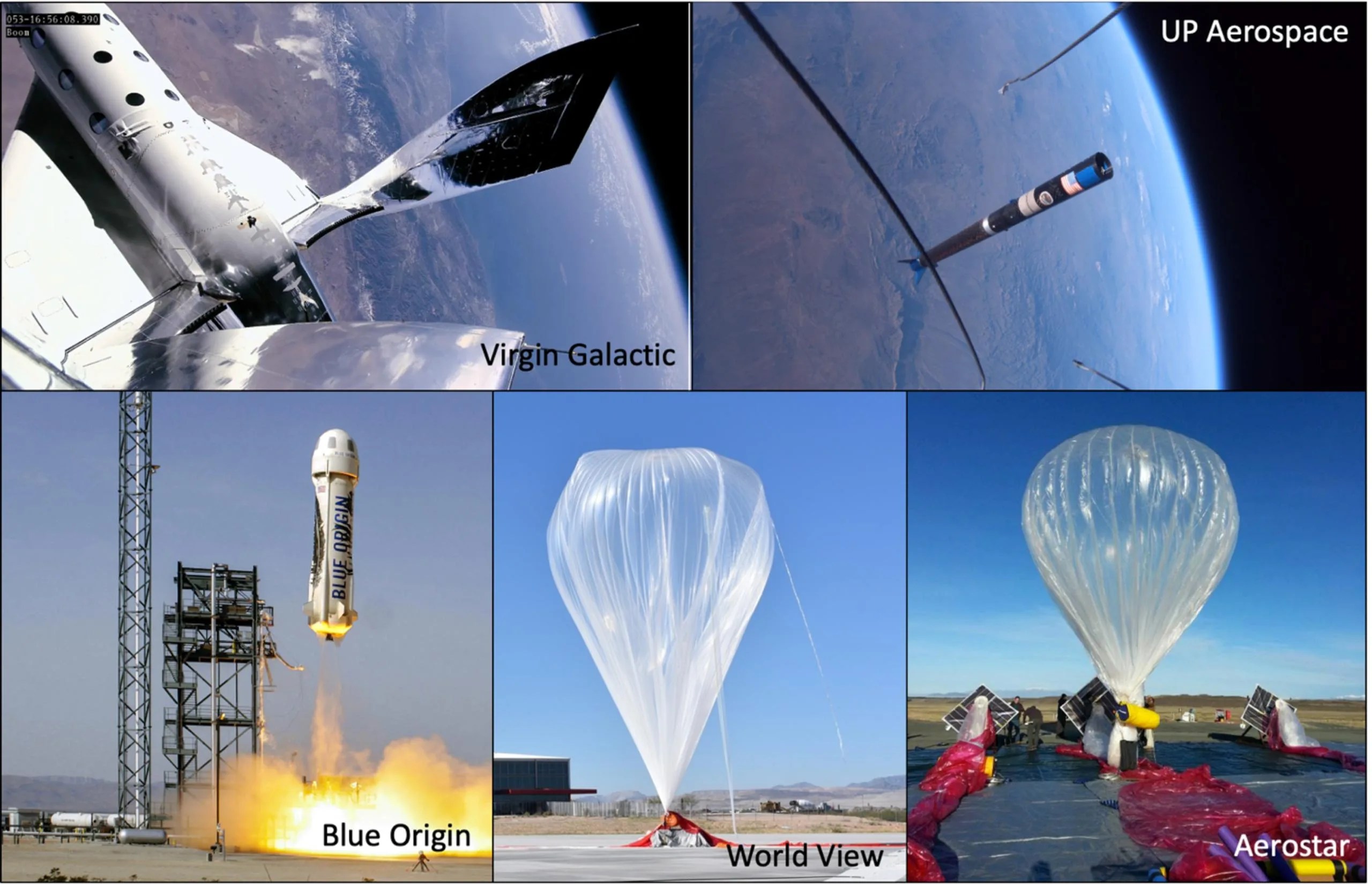
Why Suborbital Research?
Suborbital platforms offer numerous advantages and opportunities that enable researchers to collect valuable data, as well as advance their experiment and/or technology payloads for demanding space missions. Some of the advantages of suborbital flights include the ability to:
- Collect in-situ scientific data for particular space environments or phenomena.
- Evaluate the performance and feasibility of payloads within relevant environments that cannot be readily replicated through ground-based testing. This includes exposure to high-altitude and near-space environments.
- Collect valuable performance data to advance the overall Technology’s Readiness Level (TRL)
- Refine the experiment/technology in order to significantly reduce technical risks and help ensure success of future missions.
To this end, suborbital flight testing can serve as an invaluable opportunity for conducting advanced scientific investigations as well as maturing novel technologies. Ultimately, suborbital flight testing can also assist in the development of robust payloads. In this manner, an experiment or technology can evolve from benchtop hardware onto a proven flight payload with suborbital heritage, therefore paving the way for potential mission infusion (Figure 2).
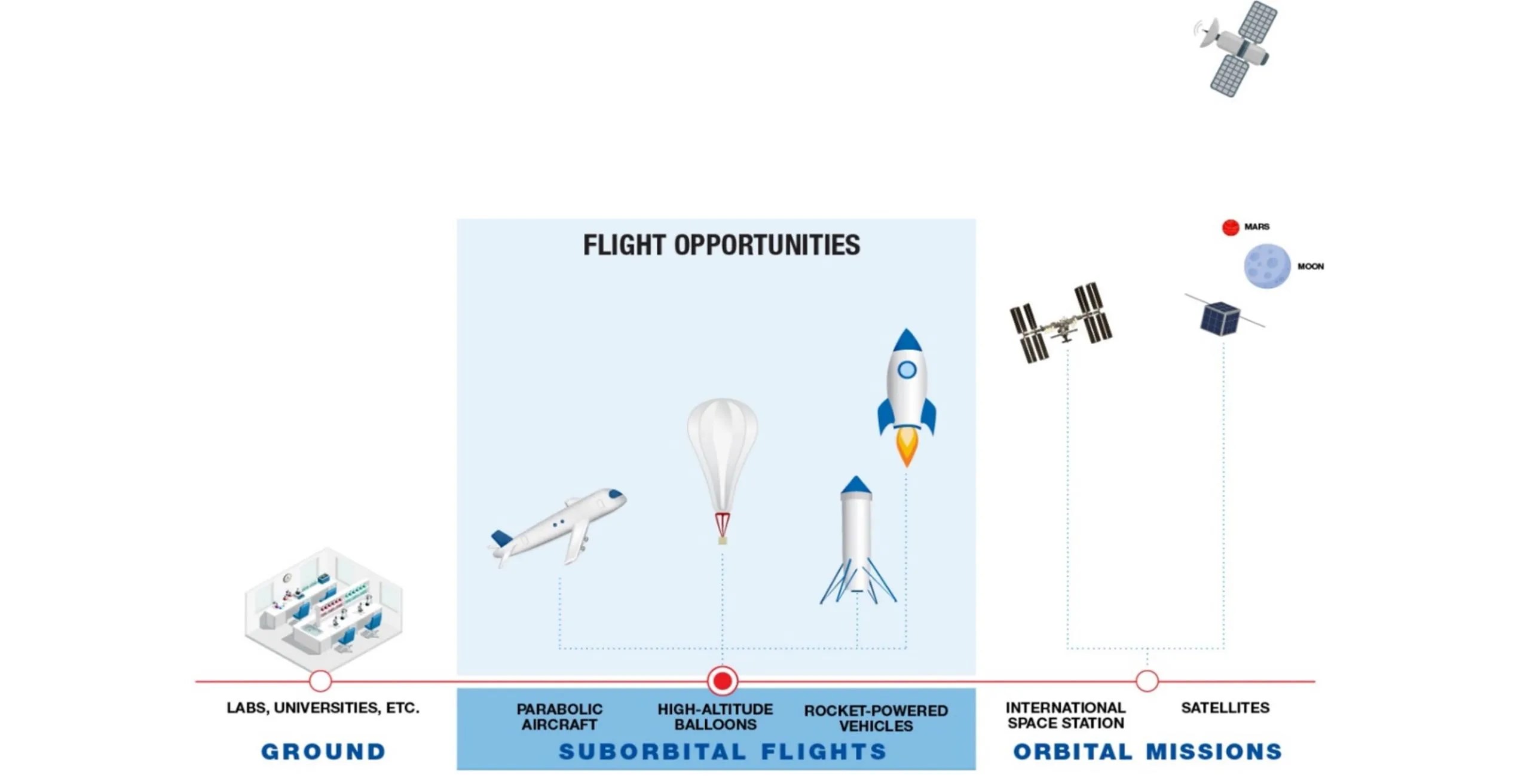
Types of Suborbital Flight Platforms
ROSES provides researchers with access to two types of suborbital flight testing platforms: high-altitude balloons and rocket-powered vehicles. SMD leverages resources through various programs and across directorates in order to offer investigators multiple research platforms, including the NASA Balloon Program Office, the NASA Sounding Rocket Program Office, and commercial high-altitude balloons and rocket-powered vehicles through the NASA Flight Opportunities program. Jointly, these programs encompass the following types of suborbital platforms:
High-Altitude Balloons
Large balloon systems (Figure 3) reach a nominal altitude of 30 km or more, can maintain long duration flights (e.g., hours, days, weeks, or months at a time) and in some cases provide station-keeping capabilities. This makes them ideal for payloads that benefit from extended periods of data collection and that may require exposure to the environment for data and sample collections. These systems are advantageous for conducting research experiments and testing new technologies. Some examples include:
- Sun-sensitive and solar instruments
- Astrophysical observation instruments
- Earth-observation instruments
- Other instruments and technologies that may benefit from high-altitude observations (e.g., Earth’s surface, atmospheric and space observations) or drop tests
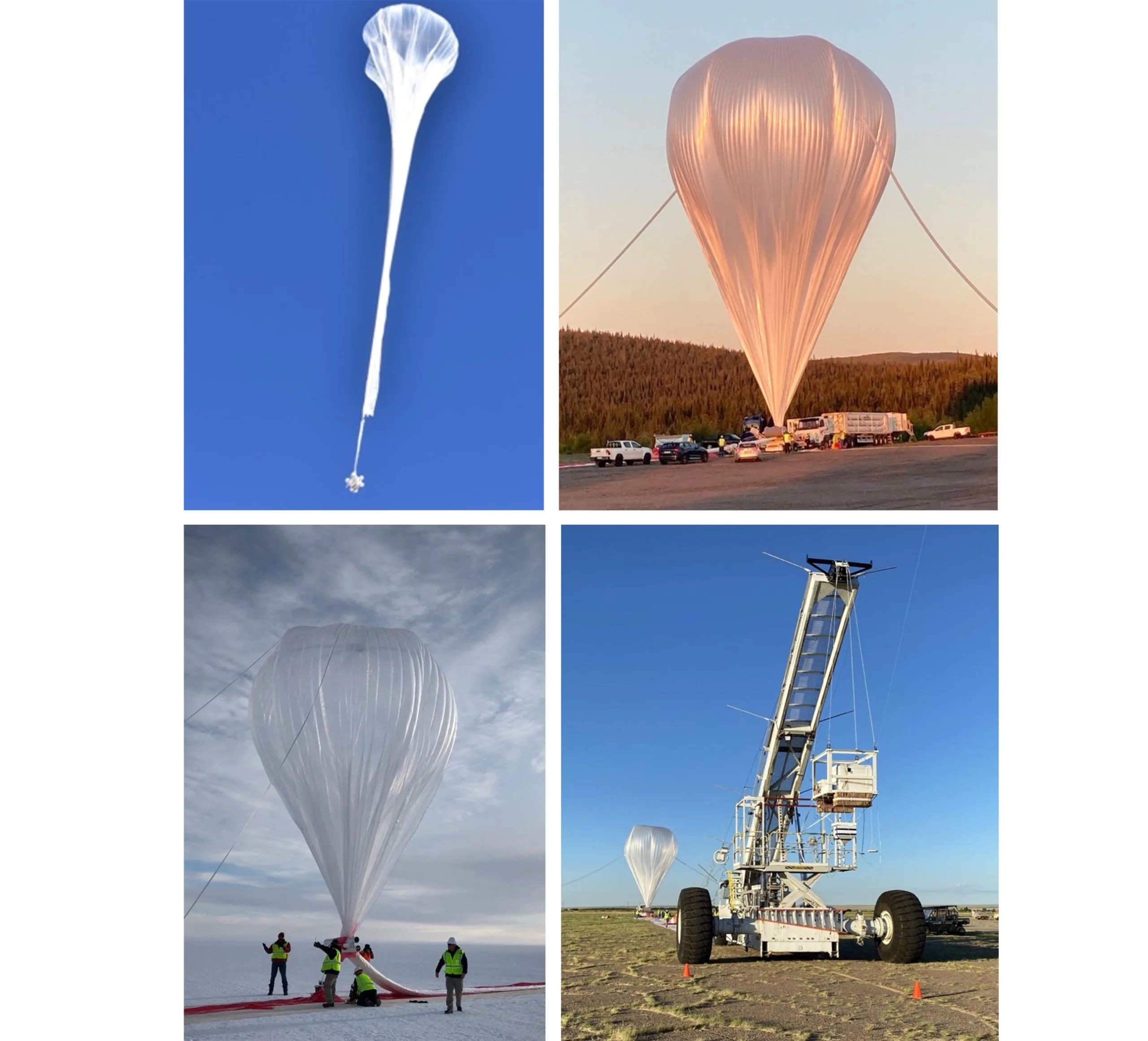
Rocket-Powered Vehicles
A variety of rocket-powered vehicles (Figure 4) can reach altitudes between approximately 80-1400 km, experience periods of continuous microgravity, and allow for either a protected pressurized environment or full exposure to space conditions, and in some cases, payload ejection. Their characteristics allow for numerous applications, including:
- Conducting Earth Science, Geospace, Heliophysics, Astrophysics, Solar and Planetary investigations
- Testing new technologies such as autonomous robotic systems, instruments, and sensors
- Evaluating in-space manufacturing techniques
- Collecting in-situ measurements for instrument validation/calibration
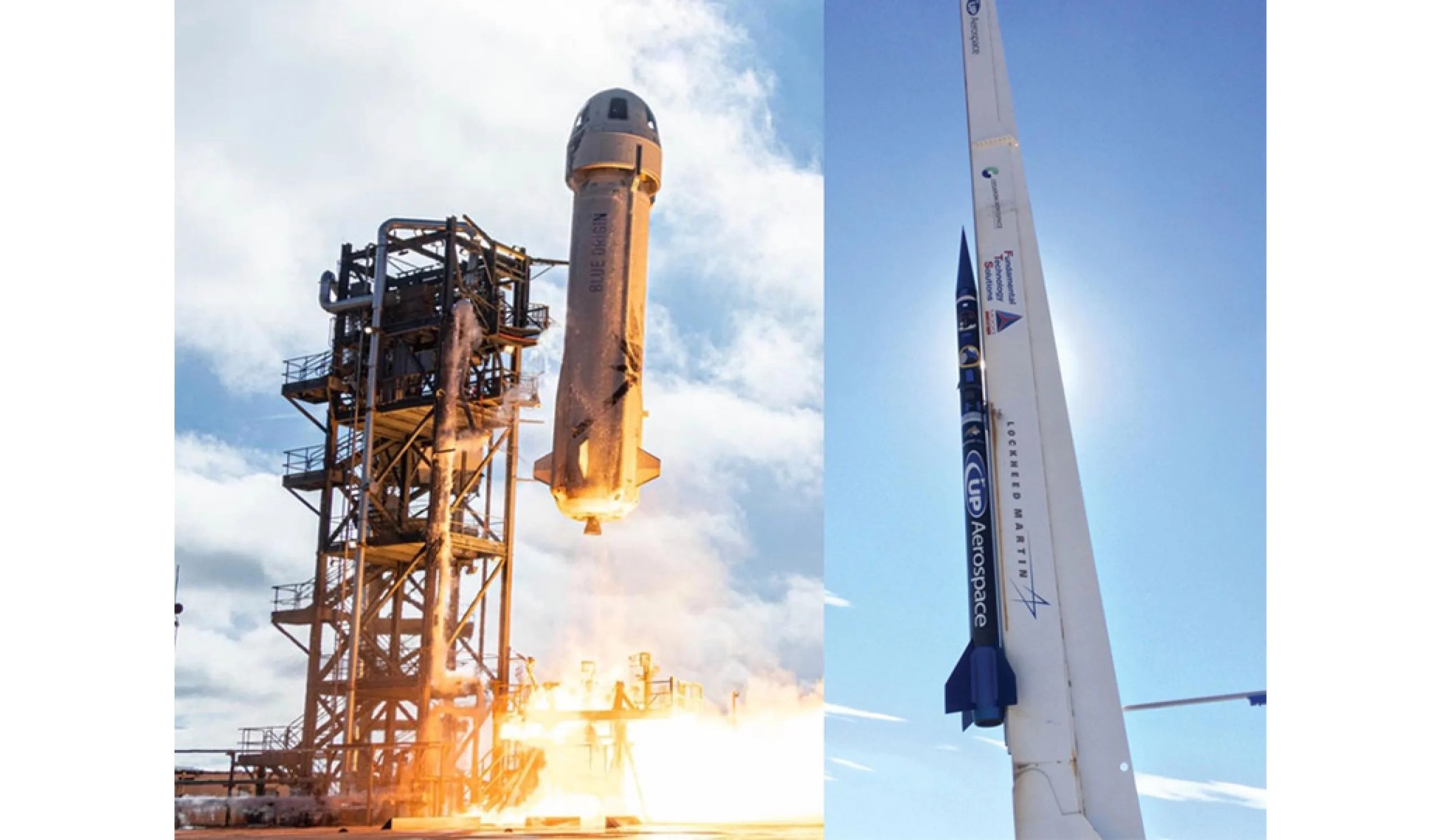
Suborbital Platforms Available Through ROSES
Suborbital flight opportunities are currently available through ROSES by means of commercial suborbital platforms and traditional NASA-provided platforms.
1. NASA-Contracted Commercial Flight Providers
ROCKET-POWERED PLATFORMS | HIGH-ALTITUDE BALLOON PLATFORMS | |||||
Company | ||||||
Vehicle | New Shepard | VSS Unity | SpaceLoft XL | Zero-Pressure Balloon | Stratollite | Z-Class |
Description | Fully reusable, high-fidelity space vehicle offers fast turnaround times from launch to payload recovery and the next flight. | This piloted, high-fidelity suborbital space plane features high payload-carrying capacity and fast payload recovery options. | This rocket is suitable for both scientific and technology payload testing and includes a payload ejection option for experiment recovery. | Multiple balloon classes available for long-duration & navigational missions, stratospheric missions for scientific, engineering, communication advances, gathering meteorological data, and more.
| This navigable system with station-keeping capabilities is suitable for payloads requiring data acquisition over long durations. | This fixed-altitude balloon system is designed for payloads requiring short-duration data acquisition. |
Flight Duration | ~15 minutes | ~1.5 hours | ~13 minutes | Up to 8 hours | Several hours to several days | Several hours to several days |
Target Altitude | +100 km | +80 km | ~115 km | +30 km | 15-23 km (to enable long-duration or long-dwell missions) | +30 km |
Target Microgravity | ~3 minutes | ~3 minutes | ~4 minutes | N/A | N/A | N/A |
Payload Weight Capacity | Single Locker: 11.3 kg Double Locker: 22.7 kg Full Stack: 68 kg Other custom solutions available for payloads up to 100.5 kg | Single Locker: 22.7 kg Double Locker: 45.4 kg Triple Locker: 68 kg Quad Locker: 90.7 kg Other custom solutions available for payloads up to 450 kg | Nominal 36 kg | Nominal 45 kg; heavier payloads also possible | Nominal 50 kg; heavier payloads also possible | Up to 1,000 kg |
Payload Dimensions | Single Locker: Double Locker: Full Stack: | Single Locker: Double Locker: Triple Locker: Quad Locker: Other custom payload sizes available | Nose Cone (NC) and Payload Transportation Systems (PTS) sections: NC-1: 868.5 cm3 NC-2: 5,915.7 cm3 NC-3: 6,980.9 cm3 PTS4-4: PTS10 (multiple sections available): | Compatible with various payload dimensions (small, medium or large); details available from flight provider | Compatible with various payload dimensions (small, medium or large); details available from flight provider | Compatible with various payload dimensions (small, medium or large); details available from flight provider |
Payload Mounting | Internal or external | Internal | Internal/external (PTS modules are enclosed in aluminum but feature windows that provide direct access to the space environment) | Internal/external (the payload envelope is open to the external environment) | External | External |
Additional information is available directly from the listed commercial flight providers, as well as the NASA Flight Opportunities program and the Guide to Commercial Suborbital Flight Providers for Flight Opportunities.
2. Additional Commercial Flight Providers (Non-NASA Contracted)
The ROSES solicitation allows proposers to also leverage non-NASA contracted commercial flight providers that can fulfill the suborbital research flight needs of their investigations. Details regarding the use of these flight providers can be found in the “Proposer-Provided Commercial Suborbital Launch Vehicles” section of the solicitation. As a reference to prospective proposers, NASA Flight Opportunities (FO) maintains a current listing of commercial suborbital flight providers that do not have contracts with NASA but have flown or are currently preparing to fly FO-funded payloads.
3. NASA-Provided Suborbital Platforms – High Altitude Balloons
HIGH-ALTITUDE BALLOON PLATFORMS | |||||
Vehicle | Zero-Pressure Balloon: Conventional | Zero-Pressure Balloon: Long Duration Arctic | Zero-Pressure Balloon: Long Duration Antarctic | Super Pressure Balloon: Mid-Latitude | Zero-Pressure Balloon: High Altitude |
Description | Launches take place from Fort Sumner, NM or Palestine, TX with multiple balloon volumes available for short duration flights supporting scientific, engineering, technology, or educational missions and utilizing line of sight communications. | Flights are launched in Sweden and land in Canada with multiple balloon volumes available for multi-day flights supporting scientific missions and utilizing both line of sight and over the horizon communications capability. | Launches take place in Antarctica with multiple balloon volumes available for missions lasting from a few days to several weeks to support scientific missions and utilizing both line of sight and over the horizon communications. | Launches takes place in New Zealand using the ~0.5 million cubic meter volume super-pressure balloon for missions lasting from a few days to several weeks at the southern hemisphere mid-latitude in support of scientific missions and utilizing line of sight and over the horizon communications. | Launches take place at the conventional or Long Duration locations using a 1.7 million cubic meter volume zero-pressure balloon for short or long duration flights supporting scientific missions utilizing line of sight and over the horizon communications. |
Flight Duration | ~2 hrs to 36 hrs | ~4 to 7 days | ~7 to 50+ days | ~ 7 up to 100 days | ~2 hrs to 21+ days |
Target Altitude | 30 to 40 km | 30 to 40 km | 30 to 40 km | 33.5 km | 47 to 50 km |
Payload Weight Capacity | Up to 2,948 kg | Up to 2,948 kg | Up to 2,948 kg | 900 to 1300 kg | Up to 200 kg |
Payload Dimensions | Compatible with various payload dimensions (small, medium or large); details available from NASA BPO | Compatible with various payload dimensions (small, medium or large); details available from NASA BPO | Compatible with various payload dimensions (small, medium or large); details available from NASA BPO | Compatible with various payload dimensions (small, medium or large); details available from NASA BPO | Compatible with various payload dimensions (small, medium or large); details available from NASA BPO |
Payload Mounting | External | External | External | External | External |
Additional information regarding NASA-provided balloon platforms is available through the NASA Balloon Program Office.
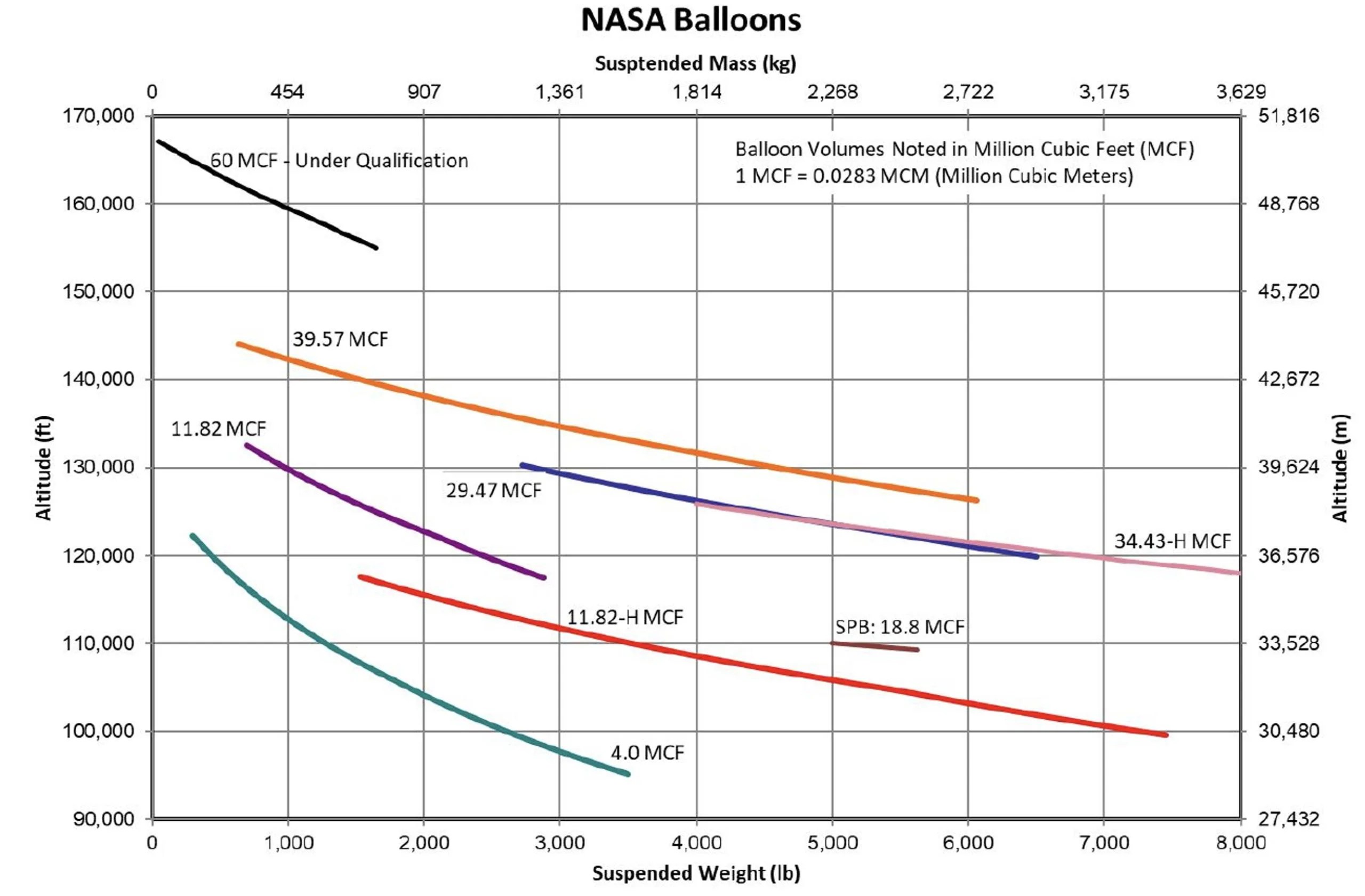
4. NASA-Provided Suborbital Platforms – Sounding Rockets
The NASA Sounding Rocket Program Office (SRPO) currently operates multiple sounding rocket launch vehicles with varying capabilities (Figure 6), including attaining altitudes from 100 to over 1,400 km, and capable of accepting payloads weighing up to 1,500 pounds. All of these vehicles are routinely used for conducting scientific investigations and technology testing. For further details regarding these vehicles and their individual capabilities, researchers are encouraged to review the NASA Sounding Rocket Program User Handbook.
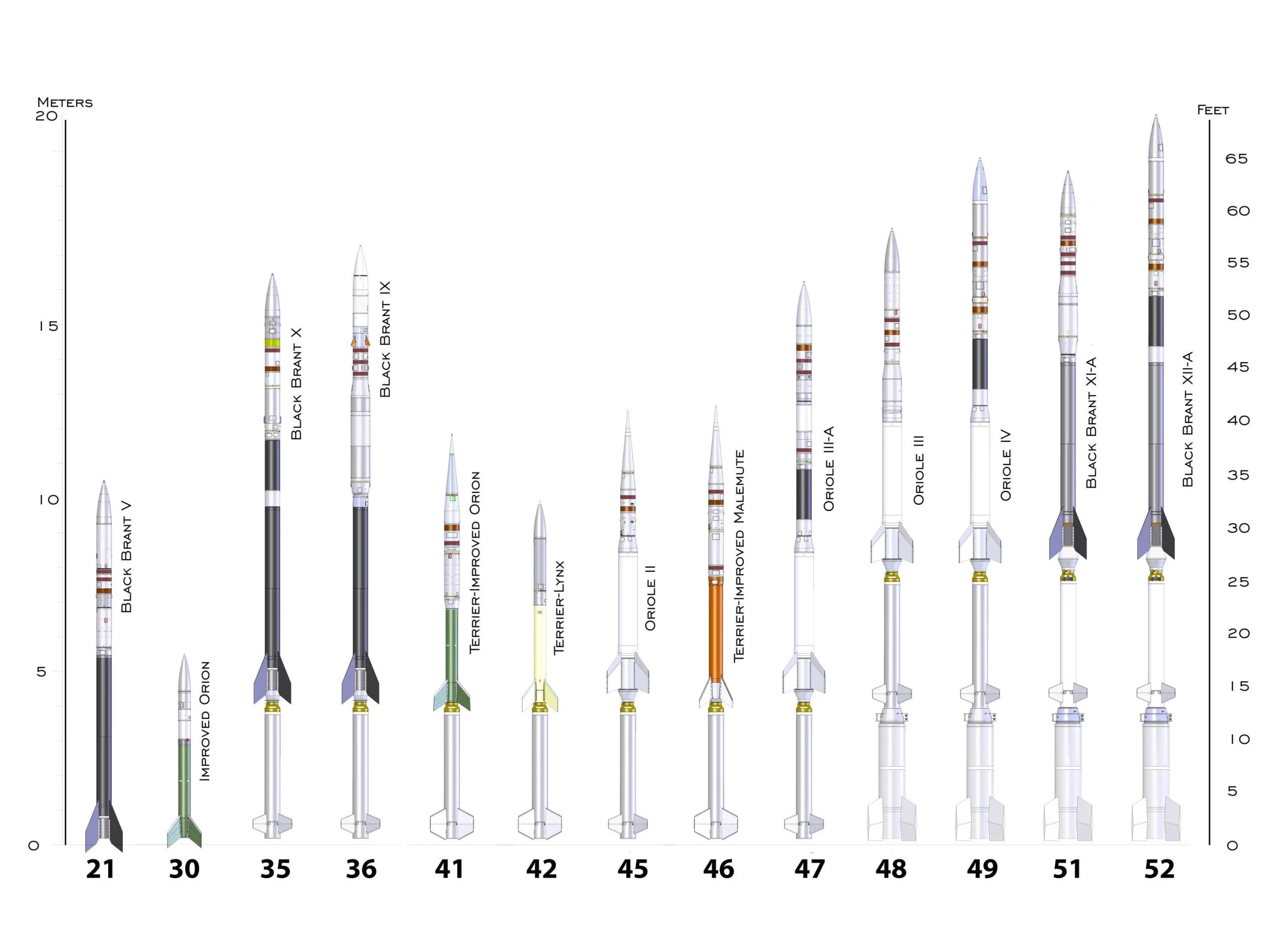
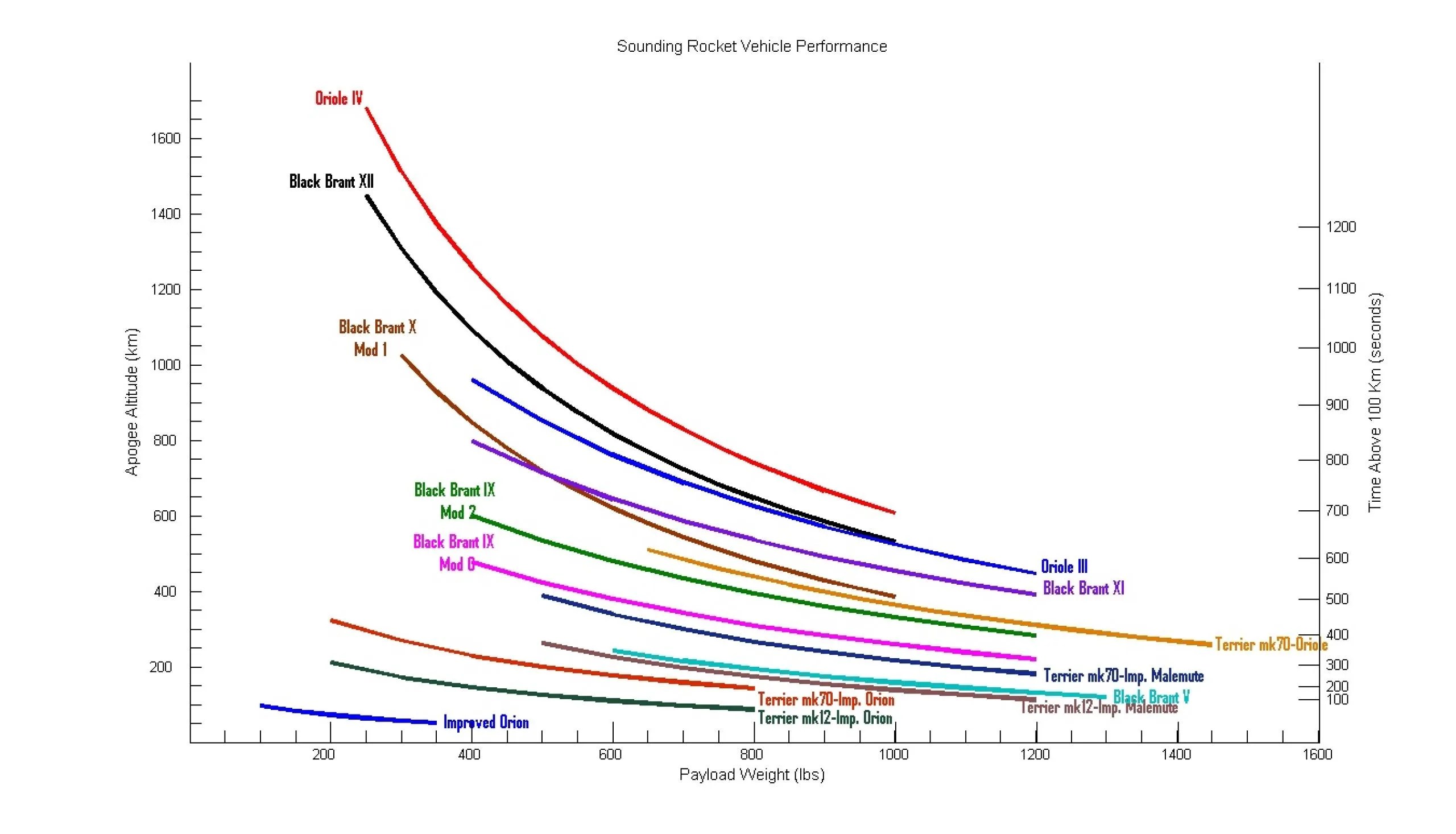
How can researchers get involved in suborbital flight testing?
Researchers can get involved in suborbital research through a variety of paths. One of the first steps involved in suborbital testing requires prospective applicants to carefully evaluate the requirements of their payloads and testing environment and then compare these requirements with the capabilities offered by the NASA and commercial suborbital platforms previously described. Prospective proposers are encouraged to contact the various NASA programs and/or commercial flight providers in order to request a copy of their most recent Payload User Guide (PUG). PUGs contain detailed information regarding a specific vehicle, its capabilities, and flight environments, in addition to compatible payload parameters such as mass, volume, power availability, etc. This information will enable investigators to determine if their payload will be compatible with a particular suborbital platform.
If the capabilities offered by the NASA-provided traditional platforms and the NASA-contracted commercial suborbital platforms prove suitable to the needs of the researcher, there are a variety of funding opportunities for supporting suborbital investigations. These include:
- Science Mission Directorate
- ROSES Solicitation
- B.9 Heliophysics Low-Cost Access to Space (H-LCAS)D.3 Astrophysics Research and Analysis (APRA)Additional information can be found in the ROSES 2023 APRA & H-LCAS Informational Webinar (September 2023) (YouTube).
- ROSES Solicitation
- Space Technology Mission Directorate
Additional Tools & Resources for Suborbital Researchers
Researchers are encouraged to leverage tools and resources that currently exist for supporting suborbital flight testing. These include:
- Suborbital platform flight simulators: In some cases, flight providers may be able to provide prospective researchers with flight simulators of a particular platform to assist in the process of determining vehicle suitability for the researcher’s prospective payload, as well as assisting during the flight hardware design, buildup, and testing phases leading up to the suborbital flight. Researchers can contact the NASA Balloon Program Office, the NASA Sounding Rocket Program Office, and the various NASA-contracted commercial flight providers to obtain further details regarding their vehicles, characteristics, and capabilities.
- Monthly Suborbital Research Webinars: The NASA Flight Opportunities (FO) program Community of Practice initiative offers monthly webinars (live & recorded sessions) dedicated to suborbital flight testing. These webinars encompass a wide range of topics, including subject matter experts highlighting suborbital research best practices, optimizing the experience for current and prospective researchers, and communicating lessons learned by researchers, among many other.
- Previously Funded Suborbital Research Projects: The NASA Flight Opportunities Technology Portfolio contains a detailed list of funded suborbital flight projects and associated abstracts that encompass multiple disciplines. Additionally, yearly ROSES solicitations listed in NSPIRES also include links to lists and abstracts of funded proposals.
- NASA Balloon User Community: the NASA Balloon Program Office (BPO) created the NASA Balloon Working Group that enables researchers to discuss current and past missions. Additional information regarding this working group is available directly from this program office.
- NASA Sounding Rocket User Community: the NASA Sounding Rocket Program Office (SRPO) created the NASA Sounding Rocket Working Group that provides researchers with a web portal highlighting information regarding current and past missions.
Suborbital questions should be directed to Thomas Hams.




